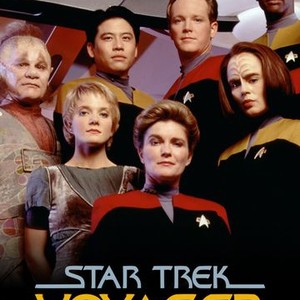

The future would be nothing but an extension of the present, with the security and comforts that it offered. This reflects Voyager as a product of the 1990s, the decade defined by the belief that the United States had won the Cold War and so reached “the end of history.” There was a belief that things were stable and sturdy and that they would remain that way. The future is so set in stone that it can withstand such tinkering. Neither episode suggests that these changes will meaningfully rewrite the future.
#Voyager star trek season 3 series#
In the series finale “Endgame,” a future version of Kathryn Janeway (Kate Mulgrew) conspires to get the ship home 16 years early. In “Timeless,” a future version of Harry Kim (Garrett Wang) prevents the ship’s destruction. Voyager frequently allowed its characters to rewrite history without any significant consequence.

“Living Witness” confirmed the Delta Quadrant had not been swallowed by the Borg in the 31st century. “Future’s End” and “Relativity” suggested that Starfleet was still operational in the 29th century. These futures were optimistic, suggesting business as usual. Star Trek: Voyager was set primarily in the 24th century but included glimpses of the 29th and 31st centuries. The “future within the future” in Star Trek particularly reflects the United States’ self-image. Kennedy, with Kirk’s “final frontier” responding to Kennedy’s “new frontier,” then the Federation is an extrapolation of the myth of Kennedy’s “Camelot,” a romantic extension of American exceptionalism. Kirk (William Shatner) can be seen as an analogue for President John F. Even the prequel Enterprise explored the roots of the organization.Īs such, the collapse of the Federation is a big deal in the world of Star Trek, particularly given that Starfleet and the Federation have long served as metaphors for American self-image. Every Star Trek show has been told from a Federation perspective. The Federation has long been synonymous with Star Trek, with Starfleet serving as the military and exploratory arm of the galactic union among a variety of races including humanity, the Vulcans, the Tellarites, and the Andorians. In “That Hope Is You, Part 1,” Michael Burnham (Sonequa Martin-Green) arrives in the distant 31st century to discover that the Federation no longer meaningfully exists. In the third season premiere of Star Trek: Discovery, that circle is squared. Hamlet ruminates on death as “the undiscovered country,” not the future. In Star Trek VI: The Undiscovered Country, Klingon Chancellor Gorkon (David Warner) toasts “the undiscovered country: the future.” Despite his boasts that the crew of the Enterprise have not experienced Shakespeare until they “read him in the original Klingon,” it seems like something might have been lost in translation.


 0 kommentar(er)
0 kommentar(er)
